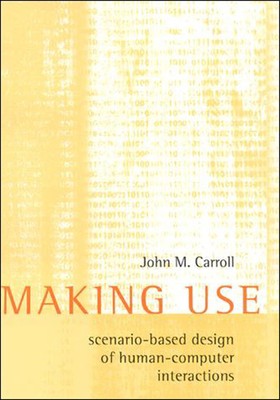
- We will send in 10–14 business days.
- Author: John M Carroll
- Publisher: MIT Press
- ISBN-10: 0262513889
- ISBN-13: 9780262513883
- Format: 15.2 x 22.9 x 2 cm, softcover
- Language: English
- SAVE -10% with code: EXTRA
Reviews
Description
John Carroll shows how a pervasive but underused element of design practice, the scenario, can transform information systems design.Difficult to learn and awkward to use, today's information systems often change our activities in ways that we do not need or want. The problem lies in the software development process. In this book John Carroll shows how a pervasive but underused element of design practice, the scenario, can transform information systems design. Traditional textbook approaches manage the complexity of the design process via abstraction, treating design problems as if they were composites of puzzles. Scenario-based design uses concretization. A scenario is a concrete story about use. For example: A person turned on a computer; the screen displayed a button labeled Start; the person used the mouse to select the button. Scenarios are a vocabulary for coordinating the central tasks of system development--understanding people's needs, envisioning new activities and technologies, designing effective systems and software, and drawing general lessons from systems as they are developed and used. Instead of designing software by listing requirements, functions, and code modules, the designer focuses first on the activities that need to be supported and then allows descriptions of those activities to drive everything else. In addition to a comprehensive discussion of the principles of scenario-based design, the book includes in-depth examples of its application.
EXTRA 10 % discount with code: EXTRA
The promotion ends in 20d.14:40:10
The discount code is valid when purchasing from 10 €. Discounts do not stack.
- Author: John M Carroll
- Publisher: MIT Press
- ISBN-10: 0262513889
- ISBN-13: 9780262513883
- Format: 15.2 x 22.9 x 2 cm, softcover
- Language: English English
Difficult to learn and awkward to use, today's information systems often change our activities in ways that we do not need or want. The problem lies in the software development process. In this book John Carroll shows how a pervasive but underused element of design practice, the scenario, can transform information systems design. Traditional textbook approaches manage the complexity of the design process via abstraction, treating design problems as if they were composites of puzzles. Scenario-based design uses concretization. A scenario is a concrete story about use. For example: A person turned on a computer; the screen displayed a button labeled Start; the person used the mouse to select the button. Scenarios are a vocabulary for coordinating the central tasks of system development--understanding people's needs, envisioning new activities and technologies, designing effective systems and software, and drawing general lessons from systems as they are developed and used. Instead of designing software by listing requirements, functions, and code modules, the designer focuses first on the activities that need to be supported and then allows descriptions of those activities to drive everything else. In addition to a comprehensive discussion of the principles of scenario-based design, the book includes in-depth examples of its application.


Reviews